Have you ever encountered a lifelike humanoid robot or a realistic computer-generated face that seem a bit off or unsettling, though you can’t quite explain why?
Take for instance AVA, one of the “digital humans” created by New Zealand tech startup Soul Machines as an on-screen avatar for Autodesk. Watching a lifelike digital being such as AVA can be both fascinating and disconcerting. AVA expresses empathy through her demeanor and movements: slightly raised brows, a tilt of the head, a nod.
By meticulously rendering every lash and line in its avatars, Soul Machines aimed to create a digital human that is virtually undistinguishable from a real one. But to many, rather than looking natural, AVA actually looks creepy. There'’s something about it being almost human but not quite that can make people uneasy.
Like AVA, many other ultra-realistic avatars, androids, and animated characters appear stuck in a disturbing in-between world: They are so lifelike and yet they are not “right.” This void of strangeness is known as the uncanny valley.
Uncanny Valley: Definition
The uncanny valley is a concept first introduced in the 1970s by Masahiro Mori, then a professor at the Tokyo Institute of Technology. Mori coined the term “uncanny valley” to describe his observation that as robots appear more humanlike, they become more appealing—but only up to a certain point. Upon reaching the uncanny valley, our affinity descends into a feeling of strangeness, a sense of unease, and a tendency to be scared or freaked out. So the uncanny valley can be defined as people’s negative reaction to certain lifelike robots.
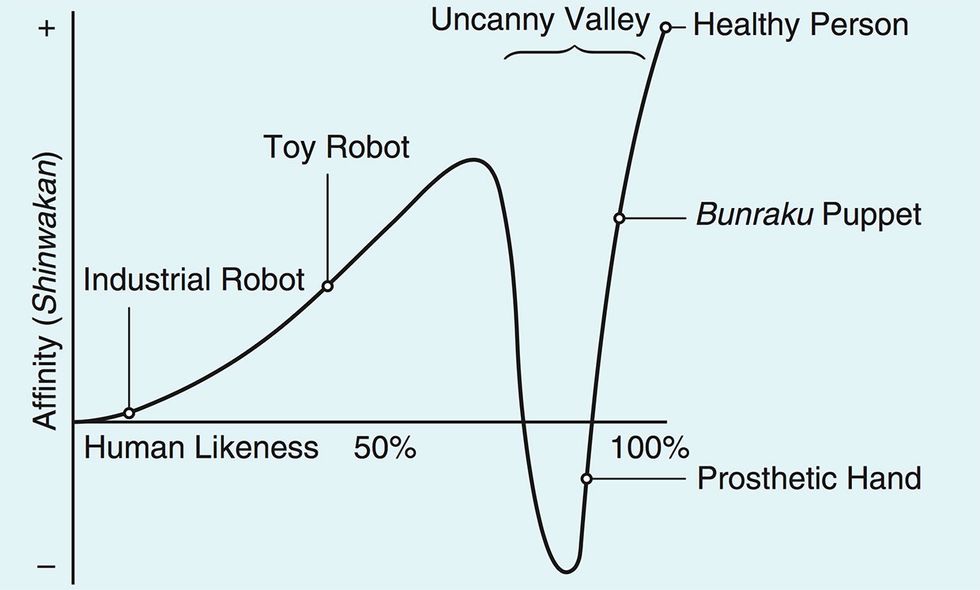
The Uncanny Valley Explained
In his seminal essay for Japanese journal Energy, Mori wrote:
I have noticed that, in climbing toward the goal of making robots appear human, our affinity for them increases until we come to a valley, which I call the uncanny valley.
Later in the essay, Mori describes the uncanny valley by using an example—the first prosthetic hands:
One might say that the prosthetic hand has achieved a degree of resemblance to the human form, perhaps on a par with false teeth. However, when we realize the hand, which at first site looked real, is in fact artificial, we experience an eerie sensation. For example, we could be startled during a handshake by its limp boneless grip together with its texture and coldness. When this happens, we lose our sense of affinity, and the hand becomes uncanny.
In an interview with IEEE Spectrum, Mori explained how he came up with the idea for the uncanny valley:
“Since I was a child, I have never liked looking at wax figures. They looked somewhat creepy to me. At that time, electronic prosthetic hands were being developed, and they triggered in me the same kind of sensation. These experiences had made me start thinking about robots in general, which led me to write that essay. The uncanny valley was my intuition. It was one of my ideas.”
IEEE Spectrum
Uncanny Valley Examples
To better illustrate how the uncanny valley works, here are some examples of the phenomenon. Prepare to be freaked out.
1. Telenoid
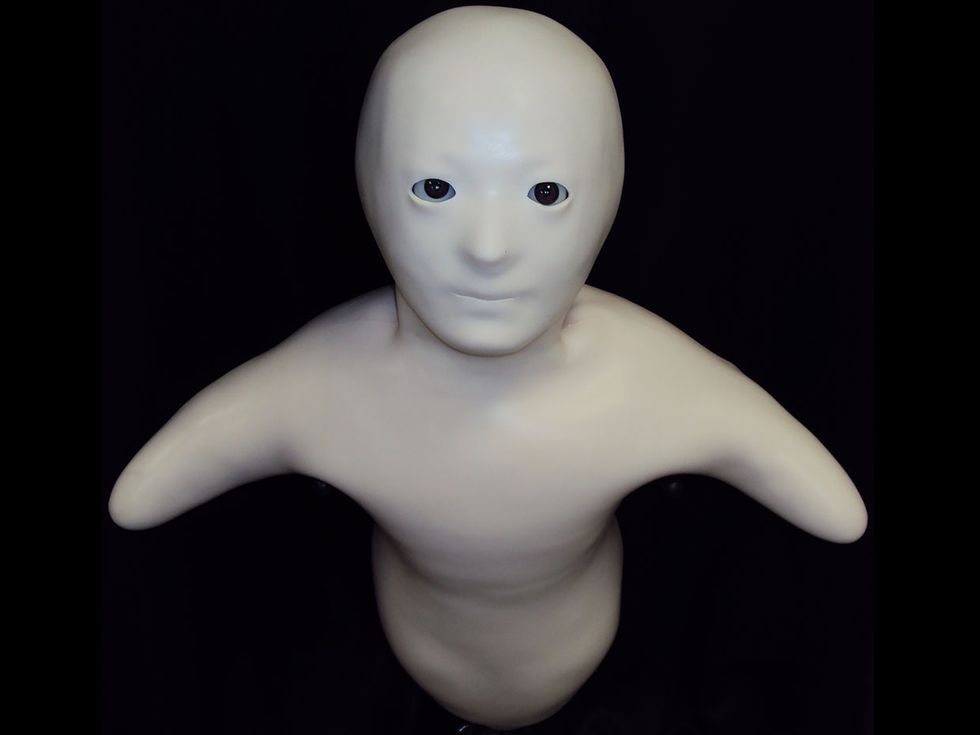
Taking the top spot in the “creepiest” rankings of IEEE Spectrum’s Robots Guide, Telenoid is a robotic communication device designed by Japanese roboticist Hiroshi Ishiguro. Its bald head, lifeless face, and lack of limbs make it seem more alien than human.
2. Diego-san
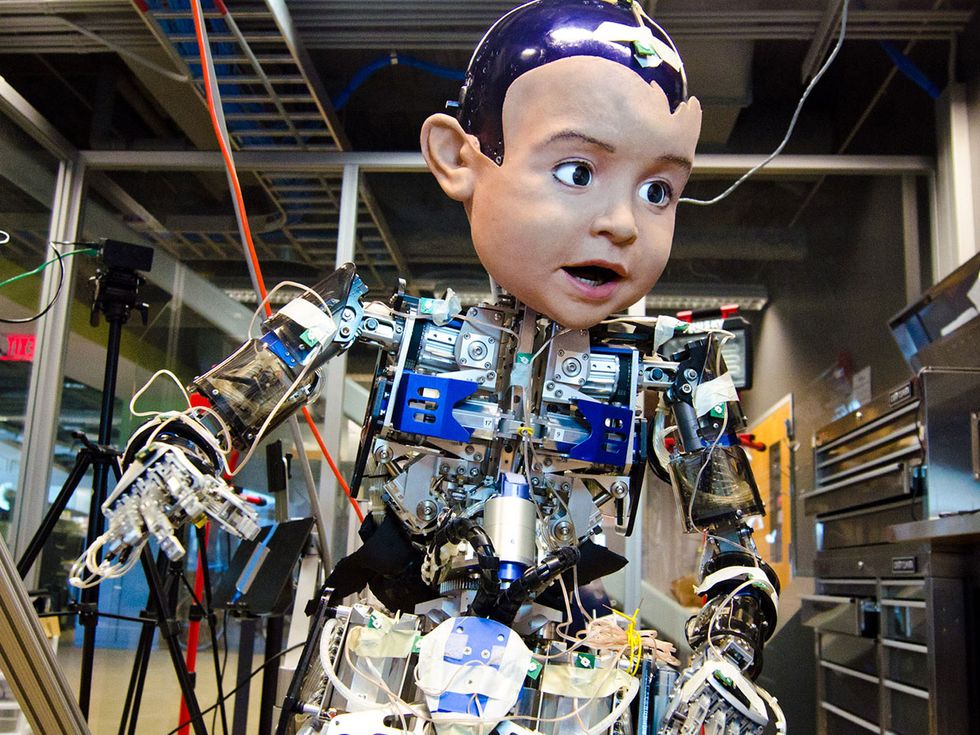
Engineers and roboticists at the University of California San Diego’s Machine Perception Lab developed this robot baby to help parents better communicate with their infants. At 1.2 meters (4 feet) tall and weighing 30 kilograms (66 pounds), Diego-san is a big baby—bigger than an average 1-year-old child.
“Even though the facial expression is sophisticated and intuitive in this infant robot, I still perceive a false smile when I’m expecting the baby to appear happy,” says Angela Tinwell, a senior lecturer at the University of Bolton in the U.K. and author of The Uncanny Valley in Games and Animation. “This, along with a lack of detail in the eyes and forehead, can make the baby appear vacant and creepy, so I would want to avoid those ‘dead eyes’ rather than interacting with Diego-san.”
3. Geminoid HI
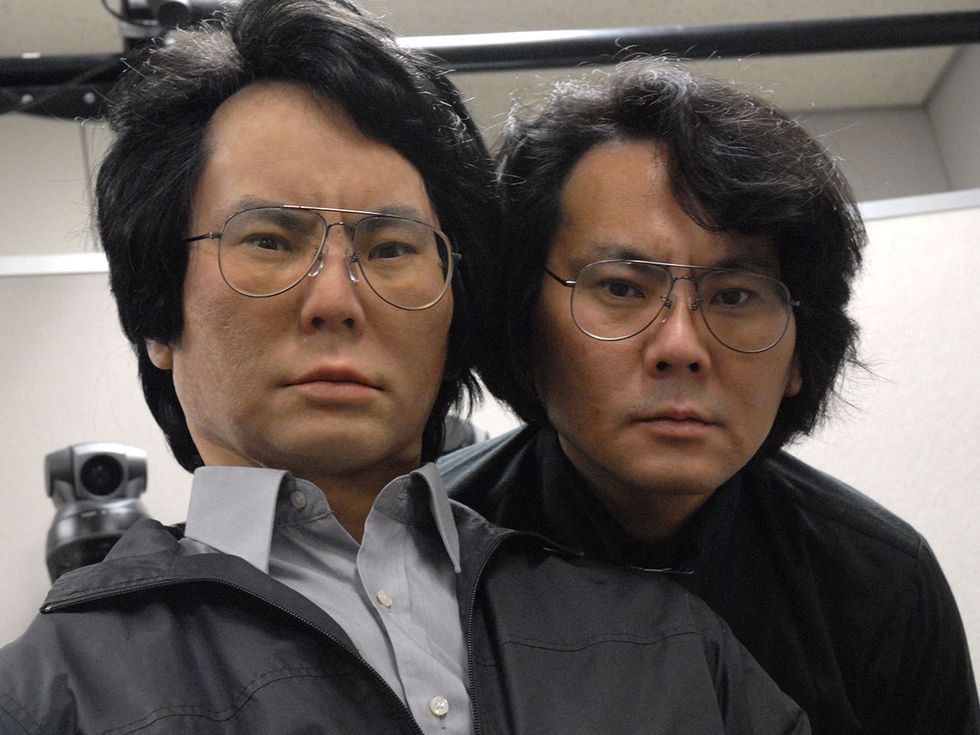
Another one of Ishiguro’s creations, Geminoid HI is his android replica. He even took hair from his own scalp to put onto his robot twin. Ishiguro says he created Geminoid HI to better understand what it means to be human.
4. Sophia
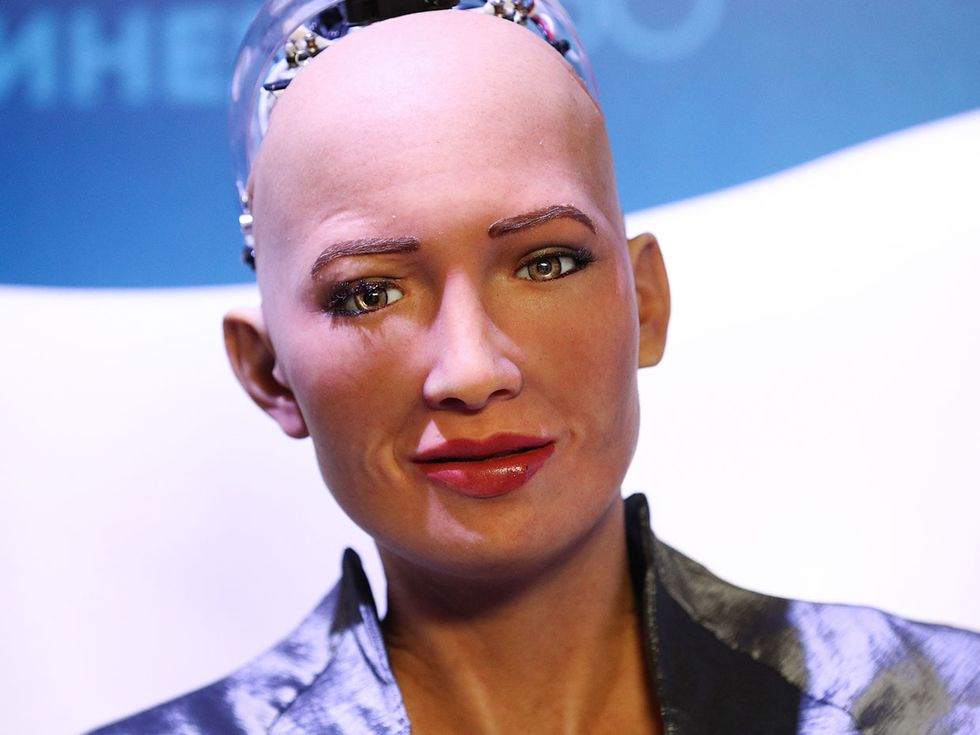
Designed by David Hanson of Hanson Robotics, Sophia is one of the most famous humanoid robots. Like Soul Machines’ AVA, Sophia displays a range of emotional expressions and is equipped with natural language processing capabilities.
5. Anthropomorphized felines
The uncanny valley doesn’t only happen with robots that adopt a human form. The 2019 live-action versions of the animated film The Lion King and the musical Cats brought the uncanny valley to the forefront of pop culture. To some fans, the photorealistic computer animations of talking lions and singing cats that mimic human movements were just creepy.
Are you feeling that eerie sensation yet?
Uncanny Valley: Science or Pseudoscience?
Despite our continued fascination with the uncanny valley, its validity as a scientific concept is highly debated. The uncanny valley wasn’t actually proposed as a scientific concept, yet has often been criticized in that light.
Mori himself said in his IEEE Spectrum interview that he didn’t explore the concept from a rigorous scientific perspective but as more of a guideline for robot designers:
Pointing out the existence of the uncanny valley was more of a piece of advice from me to people who design robots rather than a scientific statement.
Karl MacDorman, an associate professor of human-computer interaction at Indiana University who has long studied the uncanny valley, interprets the classic graph not as expressing Mori’s theory but as a heuristic for learning the concept and organizing observations.
“I believe his theory is instead expressed by his examples, which show that a mismatch in the human likeness of appearance and touch or appearance and motion can elicit a feeling of eeriness,” MacDorman says. “In my own experiments, I have consistently reproduced this effect within and across sense modalities. For example, a mismatch in the human realism of the features of a face heightens eeriness; a robot with a human voice or a human with a robotic voice is eerie.”
How to Avoid the Uncanny Valley
Unless you intend to create creepy characters or evoke a feeling of unease, you can follow certain design principles to avoid the uncanny valley. “The effect can be reduced by not creating robots or computer-animated characters that combine features on different sides of a boundary—for example, human and nonhuman, living and nonliving, or real and artificial,” MacDorman says.
To make a robot or avatar more realistic and move it beyond the valley, Tinwell says to ensure that a character’s facial expressions match its emotive tones of speech, and that its body movements are responsive and reflect its hypothetical emotional state. Special attention must also be paid to facial elements such as the forehead, eyes, and mouth, which depict the complexities of emotion and thought. “The mouth must be modeled and animated correctly so the character doesn’t appear aggressive or portray a ‘false smile’ when they should be genuinely happy,” she says.
For Christoph Bartneck, an associate professor at the University of Canterbury in New Zealand, the goal is not to avoid the uncanny valley, but to avoid bad character animations or behaviors, stressing the importance of matching the appearance of a robot with its ability. “We’re trained to spot even the slightest divergence from ‘normal’ human movements or behavior,” he says. “Hence, we often fail in creating highly realistic, humanlike characters.”
But he warns that the uncanny valley appears to be more of an uncanny cliff. “We find the likability to increase and then crash once robots become humanlike,” he says. “But we have never observed them ever coming out of the valley. You fall off and that’s it.”
From Your Site Articles
- Experts Plunge Into the Uncanny Valley, Celebrate Masahiro Mori ... ›
- Explain the Uncanny Valley in Less Than 1 Minute. Go! - IEEE ... ›
- An Uncanny Mind: Masahiro Mori on the Uncanny Valley and ... ›
- The Uncanny Valley: The Original Essay by Masahiro Mori - IEEE ... ›
- Who's Afraid of the Uncanny Valley? - IEEE Spectrum ›
- Ode to the Uncanny Valley - IEEE Spectrum ›
- Does MetaHuman’s Digital Clone Cross the Uncanny Valley? - IEEE Spectrum ›
- Digital Resurrection Brings Star Trek Back to the Future - IEEE Spectrum ›
Related Articles Around the Web
As an AI enthusiast deeply immersed in the field, I can confidently speak to the intricacies of the uncanny valley and its profound impact on the development of lifelike robots and computer-generated characters. My extensive knowledge spans various aspects of artificial intelligence, robotics, and human-computer interaction, providing a solid foundation to discuss the nuances of the uncanny valley phenomenon.
Now, diving into the provided article:
The Uncanny Valley Concept: The uncanny valley, a term coined by Masahiro Mori in the 1970s, describes a peculiar psychological response as robots become more humanlike. The concept is graphically represented, showcasing that as a robot's human likeness increases, our affinity towards it also increases, but only up to a certain point. Beyond that threshold, a sense of strangeness, unease, and even repulsion sets in.
Masahiro Mori's Insight: Mori's initial observations stemmed from his childhood aversion to wax figures, and the eerie sensation they triggered. This discomfort extended to early electronic prosthetic hands, inspiring Mori's essay where he introduced the concept of the uncanny valley. His intuition, rather than a rigorous scientific approach, led him to propose the concept as a guideline for robot designers.
Examples of the Uncanny Valley: The article provides several examples of entities residing in the uncanny valley:
- Telenoid: A robotic communication device designed by Hiroshi Ishiguro, with a bald head, lifeless face, and limbless appearance.
- Diego-san: A robot baby developed by engineers at the University of California San Diego's Machine Perception Lab, perceived as unsettling due to a lack of detail in the eyes and forehead.
- Geminoid HI: Another creation by Hiroshi Ishiguro, an android replica of himself with realistic features, including hair from his own scalp.
- Sophia: Designed by David Hanson of Hanson Robotics, Sophia is a humanoid robot known for displaying a range of emotional expressions and natural language processing capabilities.
- Anthropomorphized Felines: Examples from the 2019 live-action versions of "The Lion King" and "Cats," where photorealistic computer animations of talking lions and singing cats triggered the uncanny valley response.
Scientific Validity of the Uncanny Valley: Despite the continued fascination with the uncanny valley, its status as a scientific concept is debated. Mori himself clarified that he didn't approach it scientifically but offered it as advice for robot designers. Karl MacDorman, an associate professor, sees the uncanny valley more as a heuristic for learning and organizing observations rather than a scientific theory. Experiments have reproduced the uncanny valley effect, showing that a mismatch in human likeness, whether in appearance, touch, or motion, can elicit feelings of eeriness.
Avoiding the Uncanny Valley: Design principles can be employed to navigate around the uncanny valley. Recommendations include avoiding combinations of features on different sides of a boundary (human and nonhuman, living and nonliving), ensuring facial expressions align with emotive tones of speech, and paying attention to details like the forehead, eyes, and mouth for realistic portrayal of emotion and thought.
In conclusion, while the uncanny valley remains a subject of fascination, experts in the field emphasize the importance of understanding and mitigating its effects through thoughtful design principles. As we strive to create more humanlike robots and computer-generated characters, navigating the uncanny valley is a crucial consideration for developers and designers alike.